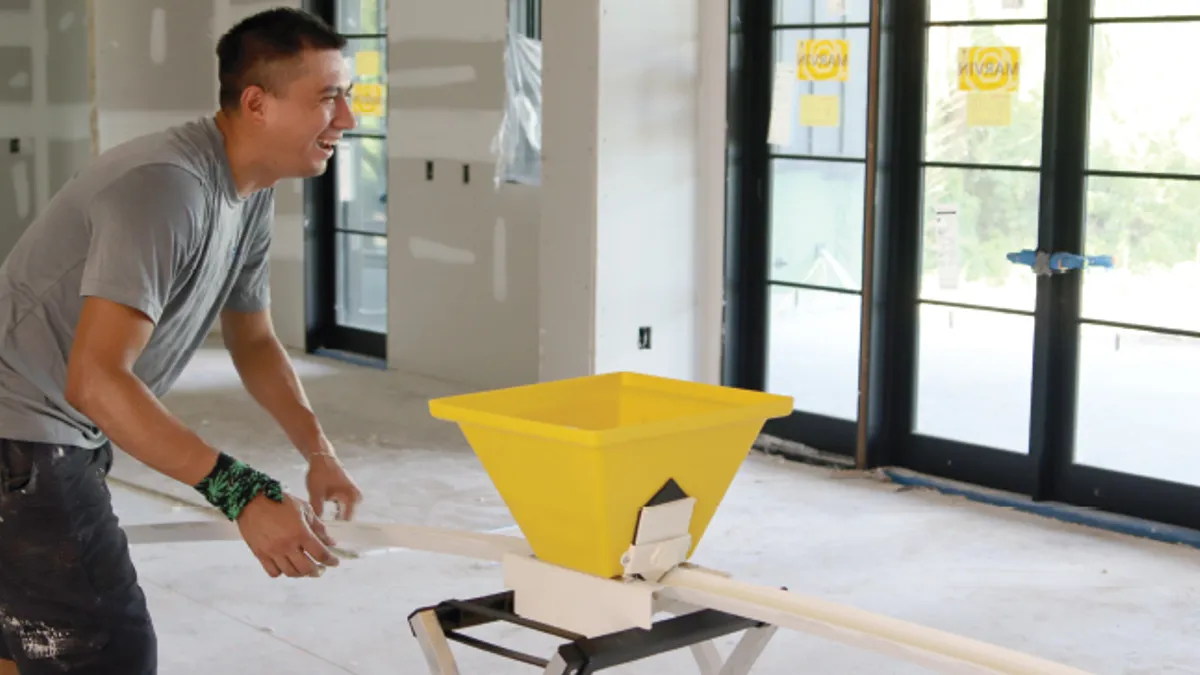Any drywall finisher in highly humid climates like the one you’ll find in Ponte Vedra Beach, Fl., knows you have one beastly enemy you need to conquer: moisture.
For properties like this upscale custom home from Coastal Oaks Construction — nestled between the ocean and the Guana River, just outside Jacksonville — summertime moisture is the number-one cause of cracks (as well as rust) in the compound of finished drywall.
Clay Drywall, the drywall contractor behind this home, is no stranger to facing down the enemy of moisture, and in 2019, when Trim-Tex rolled out Fast Edge® Paper, Clay Drywall found their best weapon against humidity — a corner bead, made from a vinyl core covered with laminated paper, that won’t rust, won’t cause cracks and holds its shape after even extreme impact.
“We use [Fast Edge Paper] in everything, up to about 500 houses a year,” says Clay Drywall President James Chapman. “We use it in 99 percent of our homes. Trim-Tex, the products they manufacture now are so much farther superior than anything that was on the market, even just a couple years ago. We've used them all. We have the best performance out of the Trim-Tex products on the Fast Edge. It makes nice, sharp, crisp angles. It uses less material, and the biggest thing of it is, for 20-something years of using these products, we have never went back and ever fixed a piece of corner bead. That is a huge thing. When you eliminate 80 percent of all your warranty claims by eliminating crap corner bead, it's a huge deal.”
This custom home, which used about 50,000 square feet of drywall board, features ultra-high ceilings. So, to reach these heights, the finishers at Clay Drywall used 12-foot lengths of Fast Edge Paper, running the bead through a mud-filled hopper before applying it to the corners (this bead only requires mud to form its powerful bond to the drywall — no adhesives or staples required).
With one finisher blading the beads toward the floors and another finisher on tall stilts working toward the ceilings, the pair worked quickly and cleanly from one corner to the next. They would pass a roller, engineered specifically for Fast Edge Paper, between them to evenly apply pressure along the 12-foot length of the bead. They would then use a joint knife to wipe the excess mud down the laminated paper legs. This way, both the vinyl core of the bead — which uses patented mud locks to function as hooks that dig into the compound — and the paper have been adhered to the wall surface for an unbeatable, highly durable bond.
When you’re working in drywall finishing, especially in an environment like the one in Ponte Vedra Beach — where your corners are vulnerable to everything from cracks to rust to day-to-day dings and dents — if you settle for flimsier corner bead, in the end, are you really saving any money? If you need to come back to the jobsite to fix all kinds of drywall cracks and rip out rusted metal from the walls, is that worth your time and material?
“I always tell people always the same thing,” James says. “A ’57 Chevy is a great car, okay? Metal corner bead was a good product. But this paper-faced corner bead is a 2022 Cadillac. Why use 1950s technology in a house that you're buildings in 2022 that's a multimillion-dollar home? Why even use it in a smaller house?”
To learn more about this project and view photos and video from the jobsite, read the full case study here.






